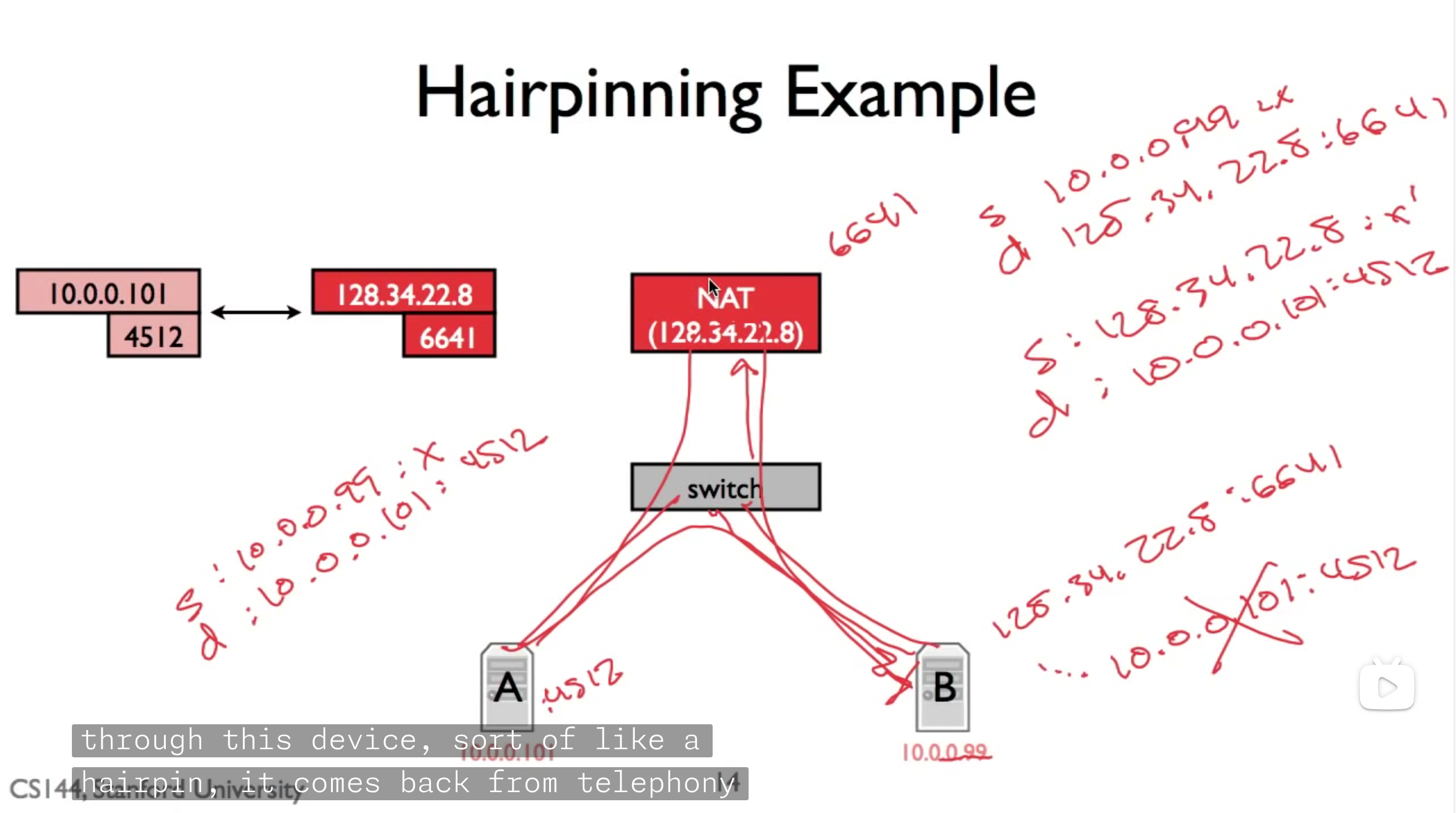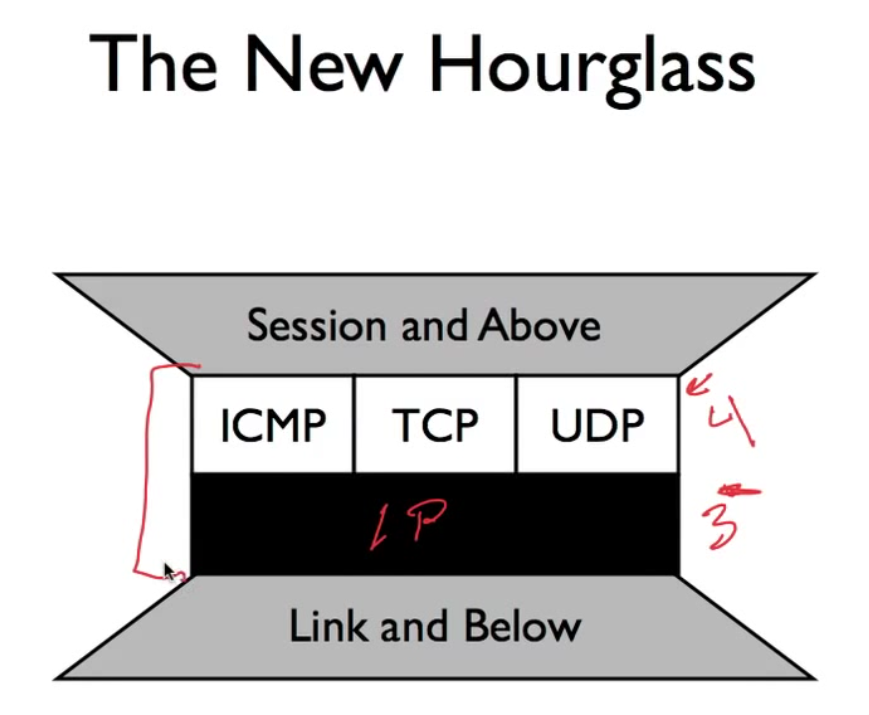Computer Network Network Address Translation
Introduction
Network address translation (NAT) is a gate between local network and the Internet. It translates/rewrites internal IP address to external IP address
When packet is sent from internal to external, the NAT will generate (or query) a mapping, from
<internal IP address, port> to <external IP address, port> pair. And after that, external packet
to this <external IP address, port> pair would be translated to <internal IP address, port>
pair. So it’s a bidirectional mapping.
Advantages:
- Secure. It turn internal IP address to a single public IP address, making attackers harder to open connection to your machine.
Types
Full Cone NAT
- Least restrictive. Any packet to NAT
<external IP address, port>pair will be translated to<internal IP address, port>pair, regardless of what the source address and source port are.
Restricted Cone NAT
- Only packets from an external IP address that the internal host has previously contacted will be translated and delivered to the internal host.
Port Restricted NAT
- Filters both source address and source port–Only those both matched could be translated.
Symmetric NAT
- Not only by definition port restricted, different destination, even with the same IP address, means a completely different mapping.
Hairpinning
Hairpinning refers to a situation where two devices behind the same NAT communicate with each other using their public IP addresses. This is tricky and specified in RFC.
Implications
No incomming connections
Solutions
-
Connection Reversal
-
Background:
- There are A on public Internet and B behind a NAT. And we say A wants to open a connection to B.
-
Approach:
- B connects to a rendezvous server.
- A contact that server through which notify B that A wants connection to it.
- Then B initiate a connection to A, as reverse connection.
-
-
Using relays
-
Background:
- Now both A and B are behind NATs.
-
Approach:
- Just that both A and B connect to a public relay server R, and R forward every packet between A and B, everything is done.
-
-
Using hole punching
-
Background:
- Similarly, both A and B are behind NATs.
-
Approach:
- A and B open connections to a public server S, and S knows their NAT external IP address.
- So that A can initiate new connection to B’s public address and port pair, vice versa.
-
Applicable scenario:
Full Cone NAT, Restricted Cone NAT, Port Restricted NAT, but not for Symmetric NAT.
- Why they are OK?
- The answer is that, by simultaneous-open mode in TCP. See RFC 5382 Page 6 REQ-2, which talks about this bahavior in NAT in detail.
- Why they are OK?
-
Be Cautious! The following may contain wrong information, as they came from AI.
You might have a problem here, as I did. Why can’t symmetric NAT communicate with each other?
Okay, things go like this:
A and B each opens a connection to rendezvous server, and expose their NAT public address. After this, one can open another connection to the other, though it would be blocked by the other side due to the Symmetric NAT policy, to grant another permission, with
<peer's IP address, port>pair.Up to now you may think: Everything is ideal for the last communication step. But think it deeper, though they did guessed the peer’s correct external port, say A guessed B’s permitted address port pair,
x:yfor example. Then A could use this port to send datagram to B. Everything seems to be fine, right?But couuld A’s external port be
y? This is the first problem.Okay, I give up. If A’s external port is
y, is the problem fixed? I think this is fine! Who can help me… :(
No new transport!
NAT need to know the information from transport layer. So if you want to write your own transport protocol, NAT will discard it. It doesn’t know your format.
NAT Debate
- Tremendously useful
- Reuse addresses
- Security (not openning connections can be good!)
- Tremendously painful
- Large complication to application development (especially before the behavior hasn’t been standardized)
- Speak Freely (pre-Skype VoIP)
The new hourglass
NAT changed everything. It makes transport layer tightly coupled to now being used. We can deploy no more other new transport layer protocol. Layer 3 is restricted to IP; Layer 4 is restricted to TCP, UDP, ICMP and cannot be changed. And it looks like the following figure:
NAT operation details
See more in RFCs.
You can also view Introduction to Computer Networking (CS 144). It analyzes some requirements in certain RFCs.
Generally, reading RFCs is good. Go for it!

